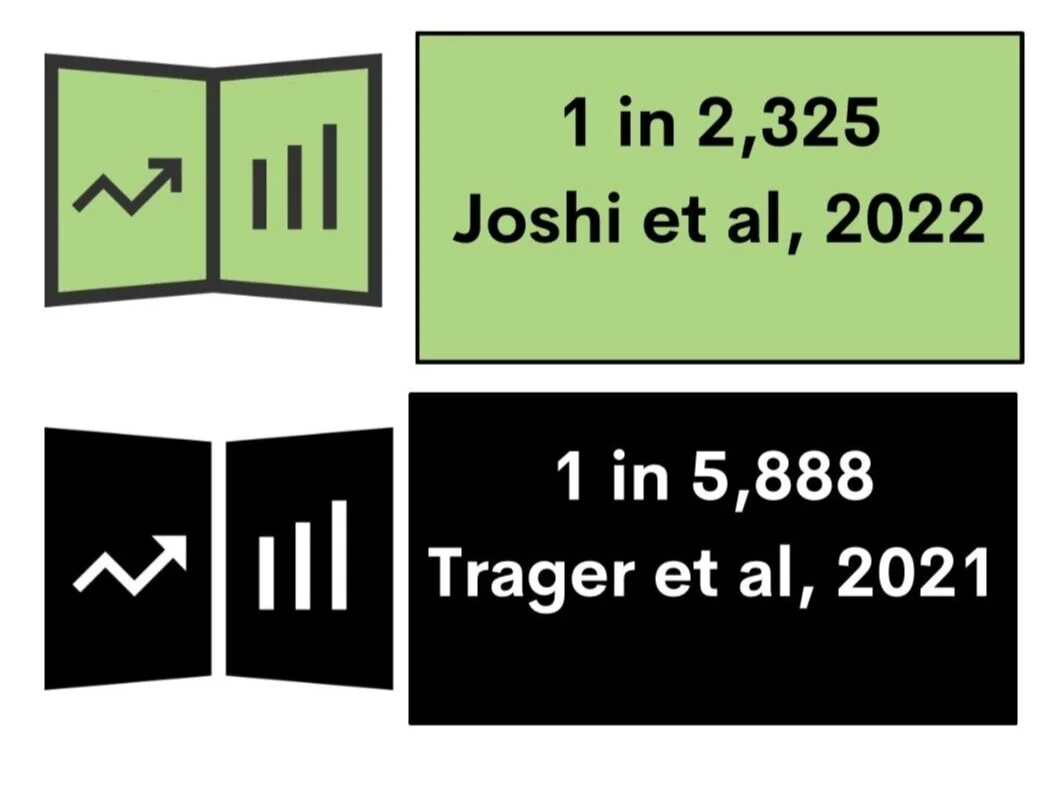Another Study of LPP Prevalence: 1 in 2325 Might be Affected by LPP
What is the true prevalence of LPP?
Lichen planopilaris is a scarring alopecia that has the potential to lead to permanent hair loss. There are many forms of LPP, including classic LPP, Frontal fibrosing alopecia, and Graham Little Picardi Lasseur syndrome. To date, there has only been one study that attempted to evaluate the prevalence of LPP.
That was a 2021 study by Trager and colleagues where authors estimated that LPP had a prevalence of 5,888. (in the same study FFA had a prevalence of 1 in 6666).
Joshi et al, 2022
In a new study, authors from Baylor College of Medicine set out to evaluate LPP prevalence (rather than incidence) in a diverse, nationwide cohort of American patients. To do so, they used the “All of Us” database. This is a recently launched initiative by the National Institutes of Health. The authors identified LPP cases in the database using the ICD 10 code L66.1 and SNOMED code 64540004.
As of March 2022, the “All of Us” database has enrolled 327,654 participants. Joshi et al identified 142 individuals with LPP, representing an overall prevalence of 0.043%. This works out to a prevalence of approximately 1 in 2,325. The average age at diagnosis was 62.4 years. In this database, females constituted 91.6% of the LPP population. The prevalence was highest in the 65-74 year age group (0.091% or 1 in 1,100), followed by the 55 to 64 year age group (0.054% or 1 in 1,850).
Prevalence in specific racial groups included 0.009% (or 1 in 11,000) in Asian individuals, 0.029% ( or 1 in 3500) in Black individuals, 0.021% (or 1 in 5000) in Hispanic individuals, and 0.057% (or 1 in 1750) in White participants
Comments
This is another interesting study of LPP prevalence. These studies are hard to do as they make alot of assumptions and make estimates based on generally low numbers of patients.
This study does not attempt to separate LPP and FFA which is something so desperately needed in our field. The ICD 10 codes are the same for FFA and LPP. Nevertheless it gives some idea about possible LPP prevalence. The data here of 0.043 % prevalence (1 in 2,325) is higher than the 0.017% ( 1 in 5882) in the study by Trager et al. In my view, this number offered by Joshi et al is probably getting closer to the true prevalence in the population.
Much of the data here in the Joshi et al study is at least somewhat similar to the Trager et al study showing a high prevalence of LPP in those 50-70 years of age. However, Trager et al showed the highest prevalence in those 41-50. Trager showed that 72.4 % of LPP patients were women and 27.6 % were male. Here, this study showed a very high proportion of women (91.6 %) which is probably not in keeping with the proportion truly seen in the actual population
REFERENCE
Joshi TP et al. Prevalence of lichen planopilaris in the United States: A cross-sectional study of the All of Us research program. JAAD Int. 2022 Jun 13;8:69-70.
This article was written by Dr. Jeff Donovan, a Canadian and US board certified dermatologist specializing exclusively in hair loss.

